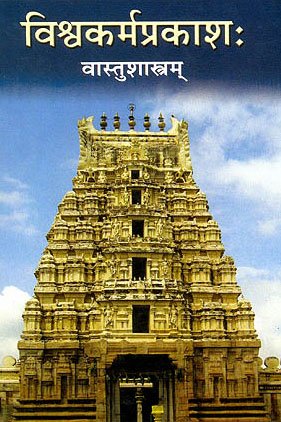Tati, Tāti, Taṭi, Tātī, Taṭī, Ṭāṭī: 21 definitions
Introduction:
Tati means something in Buddhism, Pali, Hinduism, Sanskrit, Marathi, Hindi, biology, Tamil. If you want to know the exact meaning, history, etymology or English translation of this term then check out the descriptions on this page. Add your comment or reference to a book if you want to contribute to this summary article.
Images (photo gallery)
In Hinduism
Vastushastra (architecture)
Source: Google Books: Indian Temple Architecture: Form and TransformationTātī (ताती).—Part of the standard pilaster;—This narrow moulding, or series of sub-mouldings, is like a collar around the neck which supports the capital. Its splayed form can make it a little like a small version of the phalaka/maṇḍi.
Source: OpenEdition books: Architectural terms contained in Ajitāgama and RauravāgamaTati (तति) refers to “width §§2.5; 5.6.”.—(For paragraphs cf. Les enseignements architecturaux de l'Ajitāgama et du Rauravāgama by Bruno Dagens)

Vastushastra (वास्तुशास्त्र, vāstuśāstra) refers to the ancient Indian science (shastra) of architecture (vastu), dealing with topics such architecture, sculpture, town-building, fort building and various other constructions. Vastu also deals with the philosophy of the architectural relation with the cosmic universe.
Natyashastra (theatrics and dramaturgy)
Source: Wisdom Library: Nāṭya-śāstraTaṭi (तटि) is the name of a meter belonging to the Vṛtta (syllabic) class of Dhruvā (songs) described in the Nāṭyaśāstra chapter 32:—“When the syllable in the middle is short in feet of three syllables, the metre is taṭi”.

Natyashastra (नाट्यशास्त्र, nāṭyaśāstra) refers to both the ancient Indian tradition (shastra) of performing arts, (natya—theatrics, drama, dance, music), as well as the name of a Sanskrit work dealing with these subjects. It also teaches the rules for composing Dramatic plays (nataka), construction and performance of Theater, and Poetic works (kavya).
Ayurveda (science of life)
Nighantu (Synonyms and Characteristics of Drugs and technical terms)
Source: Wisdom Library: Raj NighantuTaṭī (तटी) or Taṭa refers to “slopes” near the base of a mountain (giri) or “foot hills” according to the second chapter (dharaṇyādi-varga) of the 13th-century Raj Nighantu or Rājanighaṇṭu (an Ayurvedic encyclopedia). The Dharaṇyādi-varga covers the lands, soil, mountains [viz., Taṭī], jungles and vegetation’s relations between trees and plants and substances, with their various kinds.

Āyurveda (आयुर्वेद, ayurveda) is a branch of Indian science dealing with medicine, herbalism, taxology, anatomy, surgery, alchemy and related topics. Traditional practice of Āyurveda in ancient India dates back to at least the first millenium BC. Literature is commonly written in Sanskrit using various poetic metres.
In Buddhism
Tibetan Buddhism (Vajrayana or tantric Buddhism)
Source: Wisdom Library: Tibetan BuddhismTaṭī (तटी) is the name of Vidyārājñī (i.e., “wisdom queen”) mentioned as attending the teachings in the 6th century Mañjuśrīmūlakalpa: one of the largest Kriyā Tantras devoted to Mañjuśrī (the Bodhisattva of wisdom) representing an encyclopedia of knowledge primarily concerned with ritualistic elements in Buddhism. The teachings in this text originate from Mañjuśrī and were taught to and by Buddha Śākyamuni in the presence of a large audience (including Taṭī).

Tibetan Buddhism includes schools such as Nyingma, Kadampa, Kagyu and Gelug. Their primary canon of literature is divided in two broad categories: The Kangyur, which consists of Buddha’s words, and the Tengyur, which includes commentaries from various sources. Esotericism and tantra techniques (vajrayāna) are collected indepently.
Biology (plants and animals)
Source: Google Books: CRC World Dictionary (Regional names)1) Tati in India is the name of a plant defined with Allium cepa in various botanical sources. This page contains potential references in Ayurveda, modern medicine, and other folk traditions or local practices It has the synonym Allium nigritanum A. Chev. (among others).
2) Tati is also identified with Borassus flabellifer It has the synonym Pholidocarpus tunicatus (Lour.) H. Wendl. (etc.).
3) Tati is also identified with Citrullus colocynthis It has the synonym Cucumis colocynthis L. (etc.).
4) Tati in Southern Africa is also identified with Ptaeroxylon obliquum It has the synonym Kirkia lentiscoides Engl. (etc.).
Example references for further research on medicinal uses or toxicity (see latin names for full list):
· Webbia (1914)
· Sitzungsber. Math.-Phys. Cl. Königl. Bayer. Akad. Wiss. München (1890)
· Systema Vegetabilium. (1774)
· The Gardeners Dictionary (1754)
· Fl. Cochinch. (1790)
· Journal of Economic and Taxonomic Botany (1996)
If you are looking for specific details regarding Tati, for example chemical composition, extract dosage, diet and recipes, pregnancy safety, health benefits, side effects, have a look at these references.

This sections includes definitions from the five kingdoms of living things: Animals, Plants, Fungi, Protists and Monera. It will include both the official binomial nomenclature (scientific names usually in Latin) as well as regional spellings and variants.
Languages of India and abroad
Marathi-English dictionary
Source: DDSA: The Molesworth Marathi and English Dictionarytāṭī (ताटी).—f A light frame of bamboos or other sticks covered with grass, leaves &c. Used as a door, blind, skreen, rain-fence or wall-guard &c. 2 The frame or ornamental skreen of a makhara q. v. Sig. II. 3 A bier. 4 A bier-form load (as of leaves of the paḷasa &c.) 5 A row (of flowering plants). 6 In comp. with śēra, as śēratāṭī, A hedge-row or line of the milkbush. 7 (Esp. with pērūcī) A row of guava trees. tāṭī kāpaṇēṃ (To cut the ranks of men; to break from one's companions or connections.) To decamp or run off (roguishly).
Source: DDSA: The Aryabhusan school dictionary, Marathi-Englishtāṭī (ताटी).—f A light frame of bamboos. A bier. A row. tāṭī kāpaṇēṃ To decamp or run off roguishly.
Marathi is an Indo-European language having over 70 million native speakers people in (predominantly) Maharashtra India. Marathi, like many other Indo-Aryan languages, evolved from early forms of Prakrit, which itself is a subset of Sanskrit, one of the most ancient languages of the world.
Sanskrit dictionary
Source: DDSA: The practical Sanskrit-English dictionaryTati (तति).—pron. a. (Declined only in plural, nom. and acc. tati) So many; e. g. तति पुरुषाः सन्ति (tati puruṣāḥ santi) &c. (for other senses see the word under tan).
--- OR ---
Tati (तति).—f. [tan-ktin]
1) A series, row, line.
2) A troop, group, multitude; विस्रब्धं क्रियतां वराहततिभिर्मुस्ताक्षतिः पल्वले (visrabdhaṃ kriyatāṃ varāhatatibhirmustākṣatiḥ palvale) Ś.2.6; बलाहकततीः (balāhakatatīḥ) Śiśupālavadha 4.54;1.5.
3) A sacrificial act, a ceremony.
Derivable forms: tatiḥ (ततिः).
--- OR ---
Tāti (ताति).—Offspring.
-tiḥ f. Continuity, succession, as in अरिष्टताति (ariṣṭatāti) or शिवताति (śivatāti) q.v.
Derivable forms: tātiḥ (तातिः).
Source: Cologne Digital Sanskrit Dictionaries: Shabda-Sagara Sanskrit-English DictionaryTati (तति).—mfn. plu. (tatayaḥ tatayaḥ tatīni) So many.
--- OR ---
Tati (तति).—f.
(-tiḥ) 1. A line, a row or range. 2. A number, a crowd. E. tan to spread, affix ktin.
--- OR ---
Tāti (ताति).—m.
(-tiḥ) A son. E. tāya to spread, (the race,) ktic aff.
Source: Cologne Digital Sanskrit Dictionaries: Benfey Sanskrit-English DictionaryTati (तति).—i. e. tan + ti, f. A troop, [Śākuntala, (ed. Böhtlingk.)] [distich] 39.
Source: Cologne Digital Sanskrit Dictionaries: Cappeller Sanskrit-English DictionaryTati (तति).—1. (only as [plural]) so many.
--- OR ---
Tati (तति).—2. [feminine] extension, spreading, offering (of a sacrifice); multitude, abundance, high degree.
Source: Cologne Digital Sanskrit Dictionaries: Monier-Williams Sanskrit-English Dictionary1) Taṭī (तटी):—[from taṭa] f. ([gana] gaurādi, [Gaṇaratna-mahodadhi 49]) idem, [Gīta-govinda; Prabodha-candrodaya; Sāhitya-darpaṇa]
2) Tati (तति):—[from ta-tama] 1. tati [nominative case] [accusative] [plural] ([Pāṇini 1-1, 23 ff.]) so many, [Latin] tot [Atharva-veda xii, 3.]
3) 2a See √tan.
4) [from tan] 2b f. ([Pāṇini 6-4, 37.; Kāśikā-vṛtti] [varia lectio]; cf. tanti) a mass, crowd, [Śakuntalā ii, 6; Śiśupāla-vadha iv, 54 etc.] (cf. tamas-)
5) [v.s. ...] the whole mass (of observances, dharma-)
6) [v.s. ...] a sacrificial act, ceremony (cf. punas-), [Śāṅkhāyana-śrauta-sūtra vi, 1, 4]
7) [v.s. ...] a metre of 4 x 12 syllables, [Vṛttaratn.]
8) Tāti (ताति):—[from tāta] m. a son, [cf. Lexicographers, esp. such as amarasiṃha, halāyudha, hemacandra, etc.]
Source: Cologne Digital Sanskrit Dictionaries: Yates Sanskrit-English Dictionary1) Tati (तति):—[(tayaḥ-tayaḥ-tīni) a.] So many.
2) (tiḥ) 2. f. A line or row.
3) Tāti (ताति):—(tiḥ) 2. f. m. Offspring.
Source: DDSA: Paia-sadda-mahannavo; a comprehensive Prakrit Hindi dictionary (S)Taṭī (तटी) in the Sanskrit language is related to the Prakrit word: Taḍī.
[Sanskrit to German]
Sanskrit, also spelled संस्कृतम् (saṃskṛtam), is an ancient language of India commonly seen as the grandmother of the Indo-European language family (even English!). Closely allied with Prakrit and Pali, Sanskrit is more exhaustive in both grammar and terms and has the most extensive collection of literature in the world, greatly surpassing its sister-languages Greek and Latin.
Hindi dictionary
Source: DDSA: A practical Hindi-English dictionaryTaṭī (तटी):—(nf) a river; bank.
...
Kannada-English dictionary
Source: Alar: Kannada-English corpusTaṭi (ತಟಿ):—[noun] land on either side and along a river; bank.
--- OR ---
Tati (ತತಿ):—
1) [noun] a period of the year associated with some phase or activity of agriculture or normally characterised by a particular kind of weather.
2) [noun] the season for gathering in agricultural crops; harvest season.
--- OR ---
Tati (ತತಿ):—[noun] a large number of persons, animals or things gathered together at a place or forming a line; a multitude; a row or series.
--- OR ---
Tāṭi (ತಾಟಿ):—
1) [noun] the external covering or integument of an animal body; skin.
2) [noun] the bark of a tree.
--- OR ---
Tāṭi (ತಾಟಿ):—
1) [noun] the fan-palm tree, Borassus flabellifer (= B. blabelliformis) of Arecaceae family; grown for its durable wood, its edible fruits, its leaves used for thatching, etc.; palmyra.
2) [noun] toddy drawn from this tree.
3) [noun] a moveable bar or rod attached to the door, which fastens the it to its frame when closed.
--- OR ---
Tāti (ತಾತಿ):—[noun] a boy or man as related to his parents; a son.
--- OR ---
Tāti (ತಾತಿ):—[noun] something, as a ring or stone, bearing engraved figures or symbols thought to bring good luck, keep away evil, etc.; an amulet; a talisman.
--- OR ---
Tāti (ತಾತಿ):—[noun] a kind of plant .
Kannada is a Dravidian language (as opposed to the Indo-European language family) mainly spoken in the southwestern region of India.
Tamil dictionary
Source: DDSA: University of Madras: Tamil LexiconTaṭi (தடி) [taṭital] 4 transitive verb
1. To hew down, cut down, cut off; வெட்டுதல். வாளோச்சிமிகத் தடிந்தாள் [vettuthal. valochimigath thadinthal] (புறப்பொருள்வெண்பாமாலை [purapporulvenpamalai] 5, 8).
2. To kill, destroy; அழித்தல். மன்குலத்தொடு தடிந்து [azhithal. mankulathodu thadinthu] (மகாபாரதம் இராசசூய. [magaparatham irasasuya.] 43).
3. To reduce, diminish; குறைத்தல். தடிந் தெழிலி தானல்காதாகி விடின் [kuraithal. thadin thezhili thanalkathagi vidin] (திருக்குறள் [thirukkural], 17).
--- OR ---
Taṭi (தடி) noun perhaps from தடி¹-. [thadi¹-.]
1. [K. daḍi, M. taṭi.] Stick, staff, rod, cane; கழி. [kazhi.] Colloq.
2. Club, cudgel, bludgeon; தண்டாயுதம். (திவா.) [thandayutham. (thiva.)]
3. A piece, as of wood; மரம் முதலியவற்றின் பிளந்த துண்டம். ஒடிதூட் டடியொடு [maram muthaliyavarrin pilantha thundam. odithud dadiyodu] (பரிபாடல் [paripadal] 4, 20).
4. Measuring rod; அளவுகோல். [alavugol.] (நன். [nan.] 290, விருத். [viruth.])
5. Pestle; உலகநீதி்கை. (திவா.) [ulakkai. (thiva.)]
6. See தடிமன்². [thadiman².] Colloq.
7. Bow; வில். (பிங்கலகண்டு) மிகுகணைமுடுகிய தடியினில் [vil. (pingalagandu) migukanaimudugiya thadiyinil] (இரகுவமிசம் யாக. [iraguvamisam yaga.] 79).
8. Rice-field; வயல். (திவா.) பங்கமிட் டெறிந்தன தடிகள் [vayal. (thiva.) pangamid derinthana thadigal] (இரகுவமிசம் நாட். [iraguvamisam nad.] 21).
9. Plot of a field; பாத்தி. [pathi.] (W.)
10. Flesh; தசை. புலவு நாற்றத்த பைந்தடி [thasai. pulavu narratha painthadi] (புறநானூறு [purananuru] 14, 12).
11. Dried fish; கருவாடு. [karuvadu.] (அகநா. [agana.] 60, உரை. [urai.])
12. Iguana; உடும்பு. (பிங்கலகண்டு) [udumbu. (pingalagandu)]
13. Gemini in the Zodiac; மிதுன ராசி. [mithuna rasi.] (விதானமாலை பஞ்சதந்திரப் பாடற்ாங்க. [vithanamalai panchanga.] 14.)
14. Signature-mark of an illiterate person; கீறற்கையெழுத்து. [kirarkaiyezhuthu.] Local usage
--- OR ---
Taṭi (தடி) [taṭittal] 11 intransitive verb < தடி². [thadi².]
1. To grow large, full; to become stout; to swell; பெருத்தல். (பிங்கலகண்டு) உண்டா ளுடறடித்தாள் [peruthal. (pingalagandu) unda ludaradithal] (கம்பராமாயணம் மாயாசனக. [kambaramayanam mayasanaga.] 89).
2. To become enhanced; to increase, grow; மிகுதல். நெருப்புத் தடிப்பதுபோல் [miguthal. nerupputh thadippathupol] (ஞானவாசிட்டம் கற்க. [gnanavasittam karka.] 3).
3. To thicken, as a liquid; to congeal; to be inspissated; உறைதல். பாலைத் தடிக்கச் காய்ச்சினான். [uraithal. palaith thadikkas kaychinan.]
4. To cohere, gather together, consolidate, assume a tangible form; திரளுதல் [thiraluthal] (W.)
5. To swell in patches, as the skin by slight poison; விஷகடியினால் தடிப்புண்டா தல். [vishagadiyinal thadippunda thal.]
6. To grow stiff or rigid, as the tongue by chewing betel; to be hard, as a board; மரத்தல். வெற்றிலை தின்றதனால் நாக்குத் தடித்துவிட்டது. [marathal. verrilai thinrathanal nakkuth thadithuvittathu.]
7. To become hard, unfeeling; சித்தம் கடினமாதல். அவன் மனம் தடித்திருக்கிறது. [sitham kadinamathal. avan manam thadithirukkirathu.]
8. To be loud, harsh; உரப்பாதல். தடித்த சொல்லார் [urappathal. thaditha sollar] (கம்பராமாயணம் எழுச்சி. [kambaramayanam ezhuchi.] 65).
9. To delay, linger; to be protracted; தாமதித்தல். [thamathithal.] (W.)
--- OR ---
Taṭi (தடி) noun See தடித்து. (பிங்கலகண்டு) தடியுடை முகிற்குலம் [thadithu. (pingalagandu) thadiyudai mugirkulam] (கம்பராமாயணம் தாட. [kambaramayanam thada.] 37).
--- OR ---
Tati (ததி) noun < Telugu tati. Season, opportunity, suitable time; தக்கசமயம். ததியுறப் புகுந்து [thakkasamayam. thathiyurap pugunthu] (மகாபாரதம் அருச்சுனன்றீர். [magaparatham aruchunanrir.] 76).
--- OR ---
Tati (ததி) noun < dadhi. Curdled milk, curds; தயிர். பாலுந் ததியும் [thayir. palun thathiyum] (கந்தபு. அசுரர்யாக. [kanthapu. asuraryaga.] 70).
--- OR ---
Tati (ததி) noun < dhṛti. Strength, power, influence; சத்துவம். அவன் ததியுள்ளவன். [sathuvam. avan thathiyullavan.] (J.)
--- OR ---
Tāṭi (தாடி) noun cf. dāḍhikā. [K. dāḍi.]
1. Chin; மோவாய். சுருளிடு தாடி [movay. surulidu thadi] (சிலப்பதிகாரம் அரும்பதவுரை [silappathigaram arumbathavurai] 27, 181).
2. Beard; மோவாய் மயிர். மருப்பிற் றிரிந்து மறிந்துவீழ் தாடி [movay mayir. maruppir ririnthu marinthuvizh thadi] (கலித்தொகை [kalithogai] 15).
3. Dewlap; பசு முதலியவற்றின் அலை தாடி. பேருடற் றழைந்த தாடி [pasu muthaliyavarrin alai thadi. perudar razhaintha thadi] (திருவாலவாயுடையார் திருவிளையாடற் [thiruvalavayudaiyar thiruvilaiyadar] 36, 24).
4. Hanging excrescence under a cock’s neck; சேவற்கழுத்தில் தொங்கும் சதை. [sevarkazhuthil thongum sathai.] (W.)
--- OR ---
Tāṭi (தாடி) noun Hilt, as of a sword; வாளின் பிடி. புனைகதிர் மருப்புத் தாடி மோதிரஞ் செறித்து [valin pidi. punaigathir marupputh thadi mothiragn serithu] (சீவகசிந்தாமணி [sivagasindamani] 2279).
--- OR ---
Tāṭi (தாடி) [tāṭittal] 11 transitive verb < tāḍ.
1. To beat; அடித்தல். [adithal.]
2. To beat a drum; கொட்டுதல். தாடித் தெழுந்த தருமக வோசை [kottuthal. thadith thezhuntha tharumaga vosai] (திருமந். [thiruman.] 2317).
--- OR ---
Tāṭi (தாடி) noun < தாடி³-. [thadi³-.] Tapping, patting; தட்டுகை. ஆக தாடி யிடுவார்கள் [thattugai. aga thadi yiduvarkal] (திருப்புகழ் [thiruppugazh] 363).
--- OR ---
Tāṭi (தாடி) noun See தாட்டி². [thatti².]
--- OR ---
Tāti (தாதி) noun < dāsī.
1. Maid-servant; வேலைக்காரி. (பிங்கலகண்டு) [velaikkari. (pingalagandu)]
2. Harlot; வேசை. சௌரேச் சுரத் தாதியை நயப்பான் [vesai. saures surath thathiyai nayappan] (உபதேசகாண்டம் சிவத்துரோ. [upathesagandam sivathuro.] 200).
3. The second nakṣatra. See பரணி. (பிங்கலகண்டு) [parani. (pingalagandu)]
--- OR ---
Tāti (தாதி) noun < Pkt. dhāti < dhātrī. Foster-mother nurse; செவிலித்தாய். (பிங்கலகண்டு) [sevilithay. (pingalagandu)]
--- OR ---
Tāti (தாதி) noun < Urdu dādī. Plaintiff, complainant; வாதி. [vathi.] (C. G.)
--- OR ---
Taṭi (தடி) noun A linear measure; நீட்டலளவு வகை. தடிநான்கிற் பரந்தன [nittalalavu vagai. thadinankir paranthana] (மேருமந்தரபுராணம் [merumandarapuranam] 1153).
Tamil is an ancient language of India from the Dravidian family spoken by roughly 250 million people mainly in southern India and Sri Lanka.
See also (Relevant definitions)
Starts with (+56): Tati-anpillai, Tati-ati-mitaati, Tati-atikaran, Tati-chettu, Tati-tantavarayan, Tatibari, Tatibella, Tatiberi, Taticamuttiram, Taticattu, Taticcamcale, Taticci, Tatichettu, Tatici, Tatidha, Tatidvallari, Tatika, Tatikamamaram, Tatikarmam, Tatike.
Ends with (+355): Abhinibbattati, Abhinipatati, Abhisamsphutati, Abhyatati, Acaryasaptati, Adhipatati, Adhivartati, Adhivattati, Akattati, Alaitati, Alakarantati, Alakkuttati, Ampalattati, Anantati, Ananyasamtati, Ancantati, Antati, Anukantati, Anuparivartati, Anuparivattati.
Full-text (+172): Dadi, Grihatati, Puratati, Shivatati, Tamastati, Arishtatati, Tatiyati, Satati, Tati-anpillai, Rultati, Avatati, Tatikkompu, Vanattati, Taticamuttiram, Taticattu, Tatippayal, Narutati, Tatiyitu, Ayakshmatati, Varttaitati.
Relevant text
Search found 28 books and stories containing Tati, Tāti, Taṭi, Tātī, Taṭī, Tāṭī, Tāṭi, Ṭāṭī, Taati, Thathi, Thaathi, Dadi, Dhadhi, Thadi, Dhadi, Thaadi; (plurals include: Tatis, Tātis, Taṭis, Tātīs, Taṭīs, Tāṭīs, Tāṭis, Ṭāṭīs, Taatis, Thathis, Thaathis, Dadis, Dhadhis, Thadis, Dhadis, Thaadis). You can also click to the full overview containing English textual excerpts. Below are direct links for the most relevant articles:
Sahitya-kaumudi by Baladeva Vidyabhushana (by Gaurapada Dāsa)
Text 10.206 < [Chapter 10 - Ornaments of Meaning]
Text 10.199 < [Chapter 10 - Ornaments of Meaning]
Text 7.141 < [Chapter 7 - Literary Faults]
Garga Samhita (English) (by Danavir Goswami)
Verse 3.10.3 < [Chapter 10 - The Glory of Śrī Girirāja]
Verse 1.4.25 < [Chapter 4 - Description of Questions About the Lord’s Appearance]
Verse 4.19.11 < [Chapter 19 - A Thousand Names of Srī Yamunā]
The Tattvasangraha [with commentary] (by Ganganatha Jha)
Verse 1123 < [Chapter 16 - Examination of the Import of Words]
Verse 1125 < [Chapter 16 - Examination of the Import of Words]
Rig Veda (translation and commentary) (by H. H. Wilson)
Bhakti-rasamrta-sindhu (by Śrīla Rūpa Gosvāmī)
Verse 2.4.95 < [Part 4 - Transient Ecstatic Disturbances (vyābhicāri-bhāva)]
Verse 2.1.54 < [Part 1 - Ecstatic Excitants (vibhāva)]
Verse 3.1.27 < [Part 1 - Neutral Love of God (śānta-rasa)]
The history of Andhra country (1000 AD - 1500 AD) (by Yashoda Devi)
Part 8 - Manmachagiraju (A.D. 1268-1292) < [Chapter III - The Chagis (A.D. 1100-1477)]
Related products

